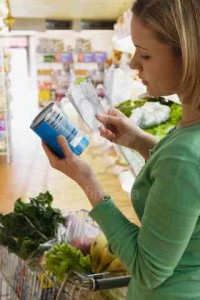 The more I wander around grocery stores, the more I realize how incredibly complicated it’s become to figure out what’s really healthy and what’s NOT. The main confusion comes from the packaging and labeling, which of course intends for us to believe all kinds of things that just aren’t true.
The more I wander around grocery stores, the more I realize how incredibly complicated it’s become to figure out what’s really healthy and what’s NOT. The main confusion comes from the packaging and labeling, which of course intends for us to believe all kinds of things that just aren’t true.
The economic downturn hit the organics food industry hard because even the smartest women who were strapped for time and cash, don’t want to have to make their way around a grocery store with a magnifying glass to read the ingredient lists.
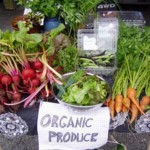 When times are tough, we just want to grab what’s easy, affordable and hopefully healthy, and get on with other more pressing issues. That being said, it’s now more important than ever to try to vote with our dollars to support a burgeoning industry, that’s taken a hard hit.
When times are tough, we just want to grab what’s easy, affordable and hopefully healthy, and get on with other more pressing issues. That being said, it’s now more important than ever to try to vote with our dollars to support a burgeoning industry, that’s taken a hard hit.
Prior to the downturn, the organic industry was booming. Huge retailers like Walmart got in on the game and as a result demand became too great for
supply. As a result, prices began to rise just as the recession hit – so that’s why organic farmers have had an especially hard time over the past two years. Things, however, are looking up. By becoming organic consumers, we’ll help to keep organic prices down in the long run. Most importantly, with all the brouhaha about health care costs, there’s never been a more important time to take control and care of our own health.
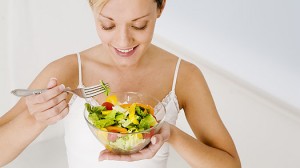 Since I started eating organically about a decade ago, my health dramatically changed. This is why I wrote The Gorgeously Green Diet – because I feel so passionate about everyone having the right to good quality food. Eating organic produce, grains, meats, and dairy is unequivocally the way to dramatically improve your health.
Since I started eating organically about a decade ago, my health dramatically changed. This is why I wrote The Gorgeously Green Diet – because I feel so passionate about everyone having the right to good quality food. Eating organic produce, grains, meats, and dairy is unequivocally the way to dramatically improve your health.
If your food is certified organic, it will unlikely be heavily processed and/or filled with additives. Making the decision to go organic is usually synonymous with making the decision to eat healthier period. Organic consumers are picky consumers – we want the best we can find because we understand that we are what we eat. We also understand that eating well is a large component of preventative health care.
So how can we avoid being duped? My first and pretty much top tip is:
 Ignore the label “NATURAL” as it means absolutely nothing! This healthy-sounding word is used liberally on food packaging, and it could honestly be used on practically any kind of junk food, because there is no legal definition or certification for this word in the U.S. You’ve probably seen it used in all kinds of different ways: “Made With Natural Ingredients” or “All Natural” but just ignore it and turn the package over to read the ingredient list.
Ignore the label “NATURAL” as it means absolutely nothing! This healthy-sounding word is used liberally on food packaging, and it could honestly be used on practically any kind of junk food, because there is no legal definition or certification for this word in the U.S. You’ve probably seen it used in all kinds of different ways: “Made With Natural Ingredients” or “All Natural” but just ignore it and turn the package over to read the ingredient list.
101 on Labeling:
Single-Ingredient Foods
On foods like fruits and vegetables, look for a small sticker version of the USDA Organic label or check the signage in your produce section for this seal. Remind yourself of how to decode those stickers the Gorgeously Green Way.
The word “organic” and the USDA seal may also appear on packages of meat, cartons of milk or eggs, cheese, and other single-ingredient foods.
Multi-Ingredient Foods
Foods such as beverages, snacks, and other processed foods use the following classification system to indicate their use of organic ingredients.
100% Organic—Foods bearing this label are made with 100% organic ingredients* and may display the USDA Organic seal.
Organic—These products contain at least 95–99% organic ingredients (by weight). The remaining ingredients are not available organically but have been approved by the NOP. These products may display the USDA Organic seal.
Made With Organic Ingredients—Food packaging that reads “Made With Organic Ingredients” must contain 70–94% organic ingredients. These products will not bear the USDA Organic seal; instead, they may list up to three ingredients on the front of the packaging.
Other—Products with less than 70% organic ingredients may only list organic ingredients on the information panel of the packaging. These products will not bear the USDA Organic seal.
Keep in mind that even if a producer is certified organic, the use of the USDA Organic label is voluntary. At the same time, not everyone goes through the 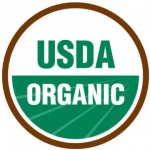 rigorous process of becoming certified, especially smaller farming operations. When shopping at a farmers’ market, for example, don’t hesitate to ask the vendors how your food was grown, and ask if you can either visit their website or their farm.
rigorous process of becoming certified, especially smaller farming operations. When shopping at a farmers’ market, for example, don’t hesitate to ask the vendors how your food was grown, and ask if you can either visit their website or their farm.
To take the guess-work out of it and to save time, I have a Farm-Fresh-To-You box delivered to my door every 2 weeks. It’s always a lovely surprise to pull out whatever has just come into season. I’m also growing as many veggies as I can in my Earth Boxes. To eat a freshly plucked tomato, zucchini or a handful or arugula is just the best. Remember, the moment a fruit of veggie is picked, it begins to lose it’s nutritional value – so Earth Box- to- mouth is the way to go!

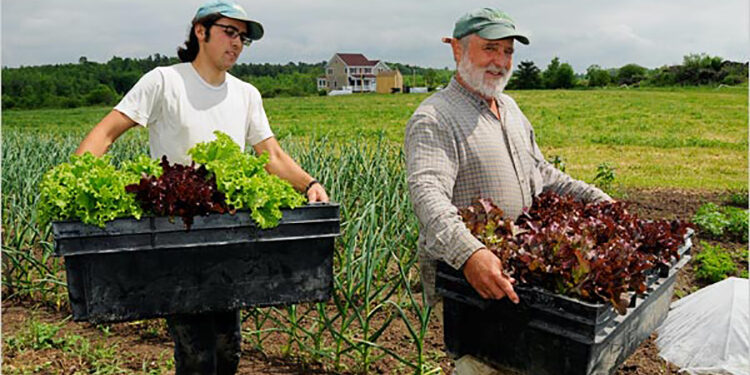


I love this post. I agree that it is SO important to be informed on what you are putting into your body. (And most corporations do not makethis an easy task.) Having children makes this even more important to me!
This is my first time pay a quick visit at here and i am in fact pleassant to read
all at one place.